Jonah Hill Is Still Having Fun Getting Dressed
- Oops!Something went wrong.Please try again later.
Back in 2018, while promoting his film Mid90s, Jonah Hill adopted a sort of uniform. He was juggling interviews and screenings and meetings upon meetings, so he decided to reduce what had been, to that point, a celebrity closet without compare. Away went the Patagonia Baggies and tie-dye tees and Palace logos that had turned him into an unlikely, delightful street style star. In came by sober, adult, sharply-cut pieces in various shades of black. This was a basic sanity thing: “I didn't have the real estate in my brain,” he explains, to dress like a maniac and get all his work done.
Two years later, he’s got plenty of real estate—and more than that, he’s building, with the release this weekend of Jonah-designed sneakers and clothing, produced through his partnership with Adidas. The shoes are a take on his beloved Sambas; the clothes a variation on the shorts-and-puffer outfit he turned into a paparazzi staple. And color is back in Jonahworld: everything comes in one of three rich jewel tones. That's not to say he's done directing—we speak on the first day of production of his new film, a documentary for Netflix about psychotherapy.
Hill spoke to GQ about putting his new gear out into the world, learning to trust his taste, and the power of personal style.

You announced that you were working with Adidas back in January, and it's obviously been a weird year since then. How long has the full shoes-plus-clothing bit been in the cards?
Jonah Hill: Let's see, in January it will have been two years since I started officially working with them, but probably the October or November of the year before was when I learned that that was going to be a partnership. I was about to start my own clothing line.
Oh, really?
Yeah. And so that [Adidas] deal kind of came in, and that would prevent me from doing that for at least two years–and I would get to design shoes and clothes for them. And I'm the biggest Adidas fan there is. So it was like, of course I'm going to learn from these geniuses and collaborate with them. Who wouldn't take that opportunity, and to get your stuff worn and seen by more people and also have a great education?
I have to imagine that, to put your own line aside, it would need to be a fairly serious offer.
Yeah. They let me do exactly what I wanted to do. And this collection, since it takes so long, it was two years ago. It was exactly what I wanted to make two years ago.
What was the initial spark? Where did you want to steer it?
Well, my first release was a Superstar—and because it was going to be the 50th anniversary [of the shoe], they told me that's what I'd have to release first. So I love my Superstar, but it wasn't what I chose. Immediately I said, you can't get basics at these big sportswear companies that are decent. They're either really tech-y or they have logos and shit all over them. So for me, the Samba's my favorite silhouette; I want to make a Samba. And then, what I would wear all the time in New York at that time was basketball shorts, Dickies, and puffer jackets. And I was like, can you just get the best version of those basics in interesting, deep colorways that don't have logos and stuff all over them? How do I get the basics I would have gotten when we were growing up that I still like to wear?
You’ve said that Samba is your favorite silhouette. What's your history with that shoe?
I’ve worn it since probably I was 11 or something—it's always been my favorite shoe. I would wear them from when I was super into soccer when I was nine or 10, and then through skateboarding. And then I never lost affection for just how it looks. They look great with shorts, they look great with pants. They're just a beautiful shoe that isn't too tech-y or futuristic.
I wanted it to be super, super simple. Except for a couple touches, which were: whenever I was growing up, I would go to the mall and get fat laces and replace my normal laces with fat laces. And I wanted them to be monochrome. The first thing I would do when I would get a new pair of Sambas, is buy fat laces in a monochromatic color and put them in. And I always felt really cool when I did that. So I wanted that to be the lace. And then writing your name on your notebooks or writing shit on your shoes—the handwriting that you see on the shoe is my handwriting. And it has been since I was a kid.
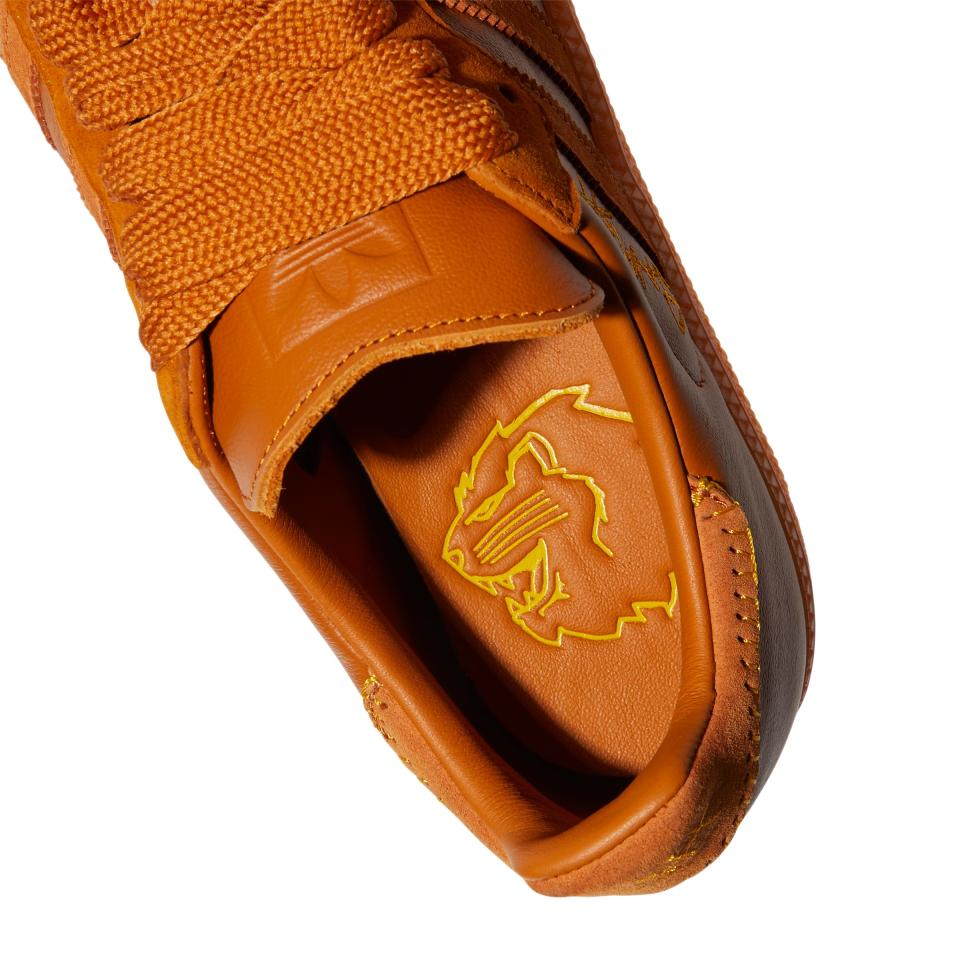


And why those colors?
My favorite color is British racing green. So whenever I had a car, not many cars come in that deep, dark, British racing green—and then especially in clothes, everything is so neon and bright and in a way that isn't as rich. And I was like, what are the other kinds of colors that go along great with British racing green? It's this merlot and this deep gold. I wanted these rich, almost darker, deeper colors.
And then what is it about that monochrome dressing that appeals to you?
A lot of people wear monochromatic black or white. I thought it was kind of cool to have monochromatic merlot. That's actually a good band name, monochromatic merlot.
I just thought it was cool to kind of take that style of dressing and make it with these colors I'm obsessed with that I don't see a lot of stuff in.
When you were sort of making and then especially promoting Mid90s, you were wearing a lot of black—it was like, This is the director's uniform. Does this represent a shift—
That's so funny. It makes me laugh that people call it a director's uniform, it's so funny. It was just because I had to do press every day and I didn't have the real estate in my brain. I would be doing interviews and then screenings and then all those things. And so it was just a way to look nice and good. I don't even think I would be able to get the job done if I had to pull off a crazy fit every time. It just looked good and clean—and it just took the focus off of that, maybe, and put it more on the film.
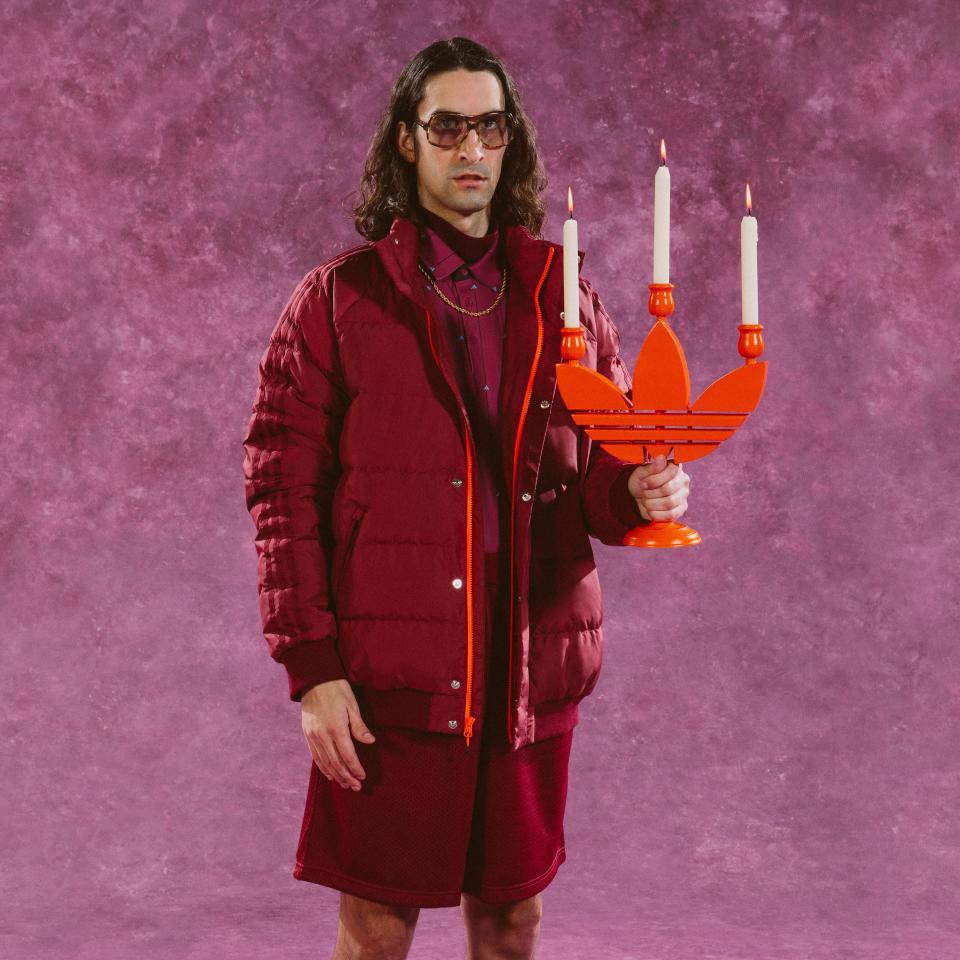
Did making a movie—calling the shots, being in charge—change the way you think about clothing at all?
I mean, I already had a passion for style before I was directing the film. But I think, as you grow as a person and as an artist, of course you have a better sense of self. All my work, whether it's design, directing, acting, writing, any of it, is aiming towards just being my true self. So that can mean anything in any moment, especially in regards to style.
I think the biggest shift in my personal style was that I always had an interest in personal style and fashion, but I was always a bigger guy. It’s really hard when you're overweight to dress a certain way, because clothes aren't made for people who are overweight to have style. So, I think it surprises people. Even now, I'll overhear someone discussing my place in the fashion world or whatever, and people are like, That guy? The schlubby guy from Superbad?
The idea was realizing, whether I was big or small, that I really can define my own personal style. I think that's a dope wave that's happening right now in culture, too. But for me, that was a big turning point of realizing: okay, be yourself. You don't have to be anything you don't want to be. And if you're really interested in fashion then you should be, don't push that away. Lean into it.
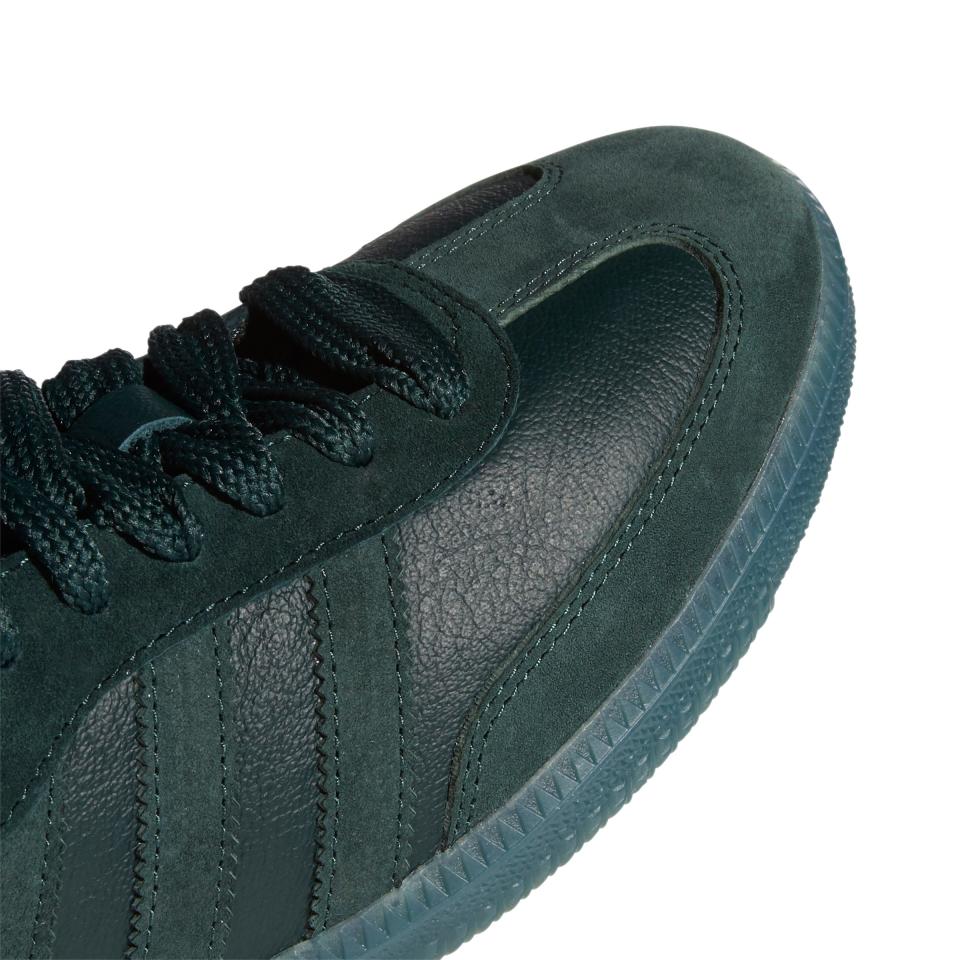

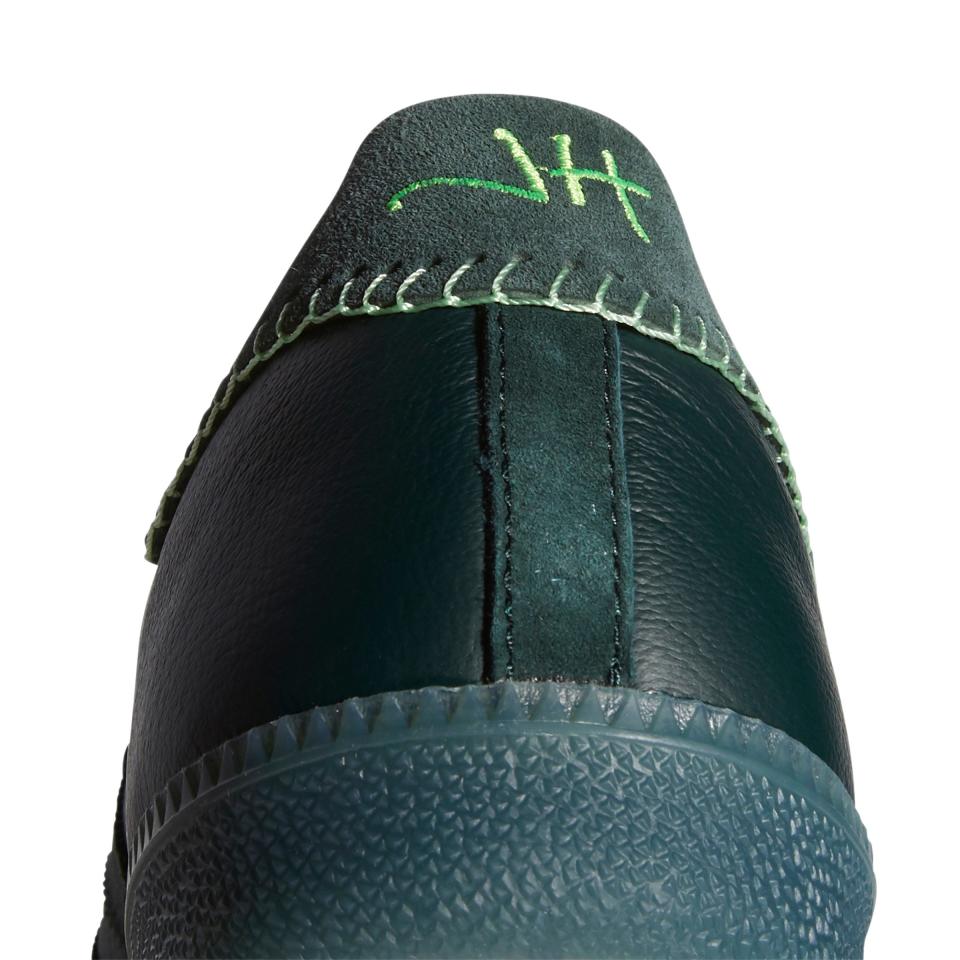
And when you started showing that part of yourself, people really liked it. Was there a moment where you were like, Oh, I'm allowed to do this?
I think I was conditioned for that based on my acting career. Because, (A) being overweight and (B) comedy, you're not supposed to be into fashion on either of those sides. When I was coming up in comedy, you would get made fun of if you cared about fashion, but I always did.
When I started to do dramas as an actor, people were like, Stay in your lane, dude, stay in your lane. And I bucked against that, even at a young age. And then when I'm like, I want to be a director, they're like, Stay in your lane, just be an actor. And I bucked against it. And then when people started writing about my fashion sense, same kind of thing. And then I'm just like: Wait, how many times do I have to tell myself I can't do something? I've done all these things that I was told that I couldn't do. Just keep going, just go on the journey of being into the shit you're into. And so by that point, you stopped caring what the reaction is, you're just in the process of enjoying it.
Totally. So what have you been enjoying lately? Or: how have you been dressing now that we don't really have to dress up for anything?
This collection really works out well for the Covid lifestyle—basketball shorts, work pants. And they got the fat laces in the work pants, which is pretty cool. And then the puffers—the puffers are the best, those are so ill. Everyone who I know who has one of those is so hyped on it. Today's the first day of shooting my next movie as a director. It's interesting—I am trying to find a more grownup style, while maintaining the fun of how I like to dress. I'm wearing my burgundy Sambas right now with striped socks and chinos, and I like these 45rpm blazers, they're kind of casual blazers. And then a polo underneath. And it's a little, I'm supposed to be the director. I'm almost 37. But I'm still wearing my Sambas and having fun. I'm not dressing like I'm going to a funeral.
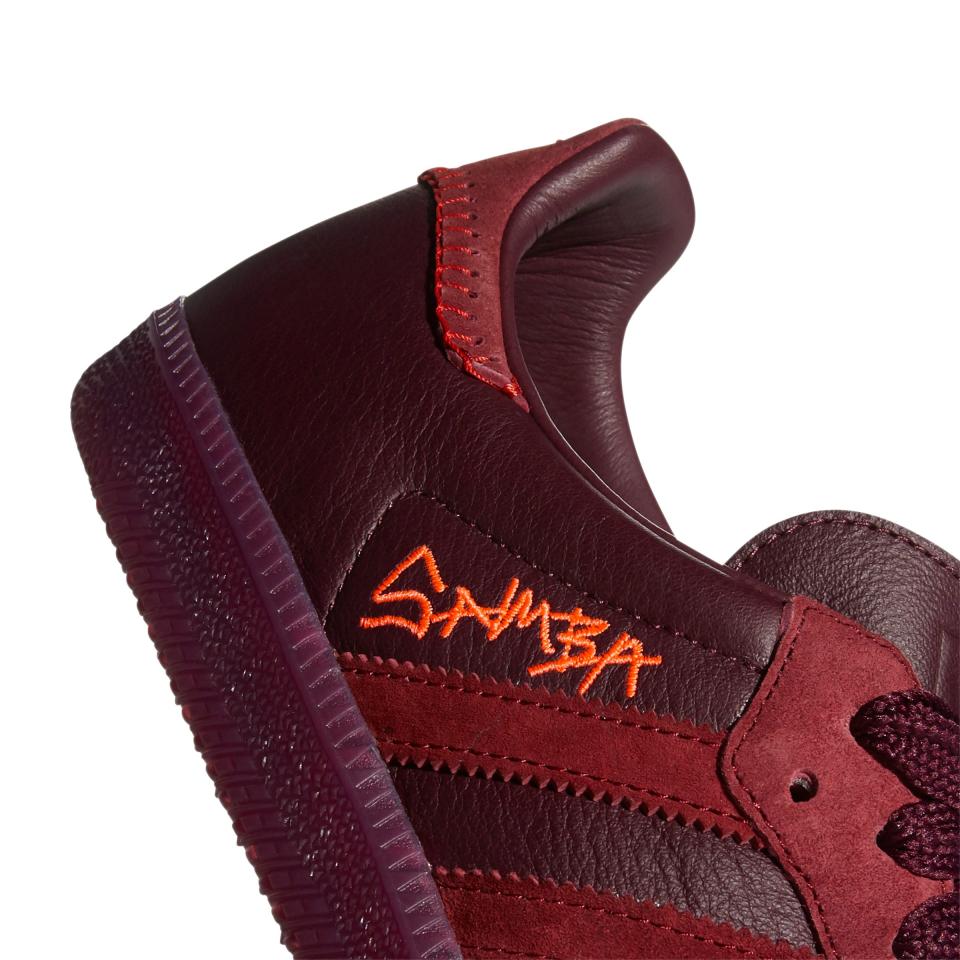
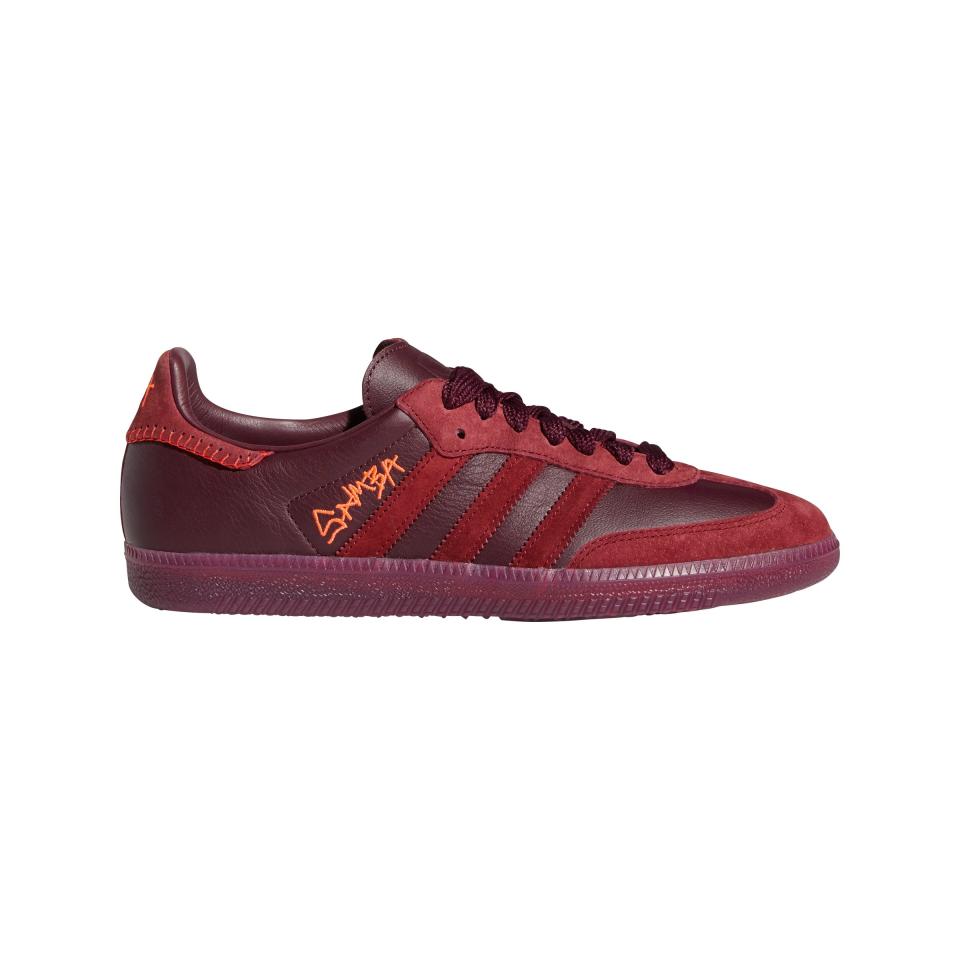

Right. Did you need to go through that period of embracing fashion and self-expression to get to a place where you wanted to, or where you felt like you could, design your own clothes?
Well, it got to the point where I understood it so literally. All these cool companies started sending me boxes of clothes. And I was like, why are they sending me this stuff? And I realized it's because they want me to get photographed in it, because then it gets put on blogs and then they sell more stuff. It was pretty literal. That's what they want me to be photographed in. And so I was like, well, if these cool companies I really look up to are asking me to wear their stuff so they can sell more of it, and I'm an artist and I have so much of my own creativity, why wouldn't my style reflect itself in what I'm making, and then be able to do that myself?
If you can frame a shot, if you can deliver a line, it’s like, Let me give that a try.
You know what, the one thing in common with all of it is? Taste. If you like my acting, you like my taste. If you like my directing, you like my taste. And if you like how I dress, you like my taste.
So I might fail. But clearly the curation of this stuff is the through-line, right? So if you can curate a movie and all the music and shots and actors and clothes and everything, and you curate how you dress and people write about it? You could probably create and curate your own stuff.
I believe in the power of telling people that. Because it's a powerful thing. Culturally we're told we shouldn't go do stuff that we're told is out of our realm or out of our capabilities. And I really don't believe in that—I've thrived in not believing in that.
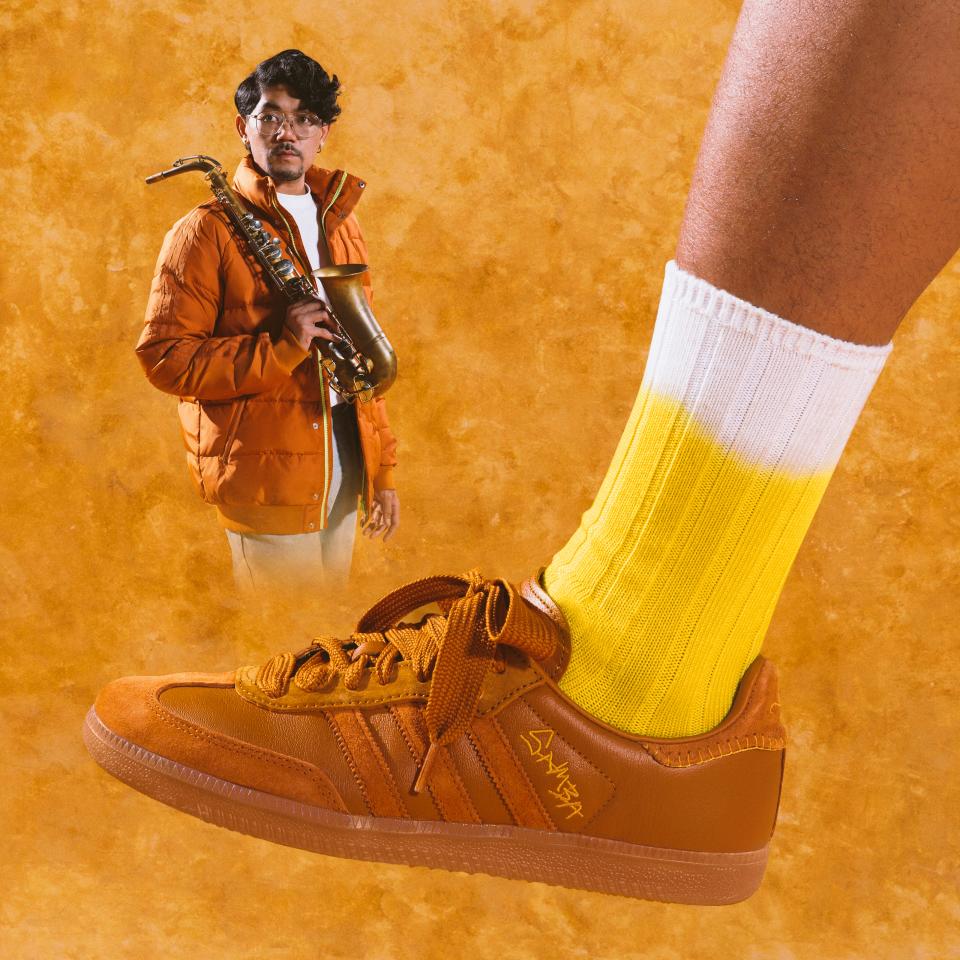
When you think about taste, is it as something that's almost genetic, or is it something you're working to develop and refine?
Ravenous curiosity—and ravenous humility, if you fail. You have to be ravenously curious to take in as much as possible and learn as much as possible. Then you have to be brave to swing at something. And then you have to be humble in that if that really doesn't work and people tell you it doesn't work. Don't be defensive, and take the criticism.
So what's the plan for the Jonah Hill private label?
I don't know yet—it depends on how this collection does. I'd love to keep working with Adidas; they're all a blast, and I hope that goes forward. But if it doesn't, then I'll go off and do my own thing. I can't be in the results. Right now, the process is talking about this stuff we all created as a team, and getting the word out there and telling the story of it properly. And then the future is unknown.
I mean, it sounds like you're making a movie about therapy.
Let me tell you, man, it gets you through the day. I don't live in the results business. This could sell no clothing or it can sell out in a second. And I can't control that. So to me, all my intentions creatively were pure.
This interview has been edited and condensed for clarity.
Originally Appeared on GQ

